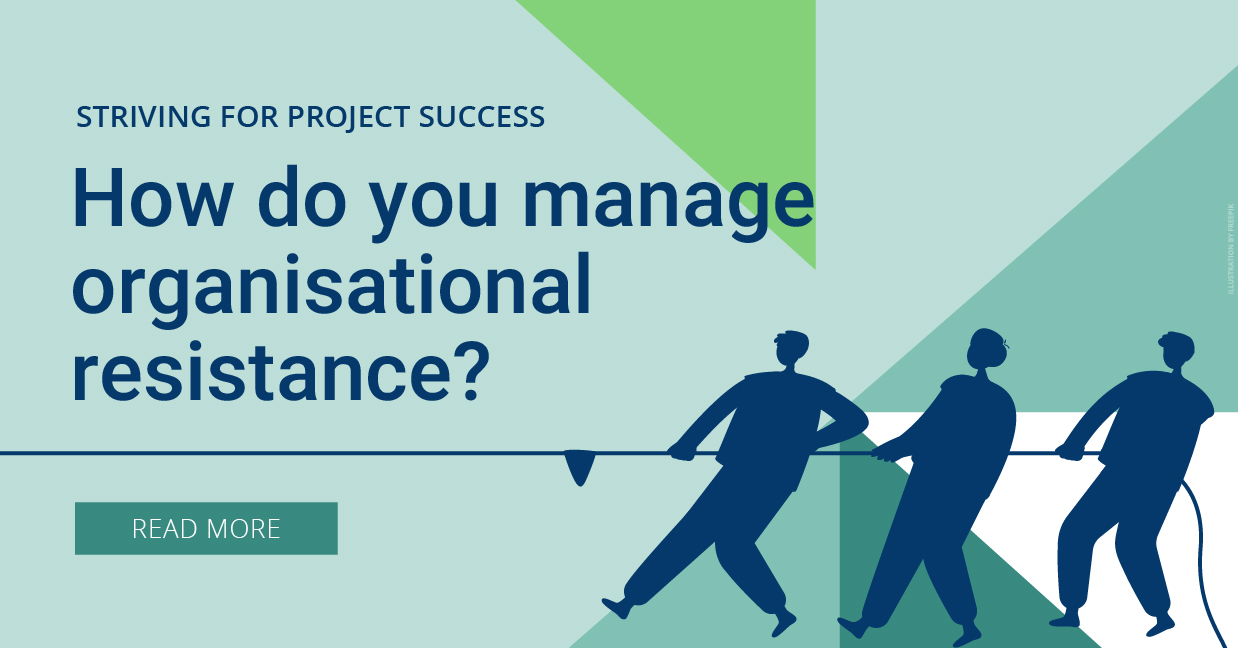
Striving for project success – How do you manage organisational resistance?
It’s hard to find organisations that don’t care about the result of their ERP implementation or Digital Transformation initiative. Pretty obvious, right? After all, there’s a lot at stake. Think about money, time, employee motivation, image and the future health of your company. Unfortunately, many organisations all over the world still perceive these kind of projects as pure IT projects. And because of that, their management frequently fails to prepare themselves properly for their important tasks and responsibilities. Organising resistance before the start of the project can help your organisation to significantly improve the chances of success.
In today’s confusing and fast-changing business world, organisations must meet a few dozen criteria to make their software implementation into a success. Oddly enough, failing to meet just one of these many criteria can already result in serious problems, project failure or even worse. Unfortunately, still too many companies learn these lessons the hard and expensive way. And – completely unnecessary – in the wrong sequence.
It might be attractive for you to fully focus on the functionality of the software. But let’s be realistic: technology is less and less often, the cause of failure. Since these projects have been evaluated in organisational change projects, we can find the success and fail factors on the human side. Do you have clearly formulated project goals? Are you able to communicate these goals in the right way to the entire team? Does everybody understand ‘the why’ behind this project? Is the organisation open for change? Are you? Importantly, is your management open for change?
Here are a few ideas on how you can limit your project risk by managing resistance in your selection and preparation process:
- Do proper research on the factors that determine both project success and project failure
- Ask your potential suppliers in the shortlist phase to share any valuable experience from their previous projects, with a focus on effective and ineffective behaviour
- Stimulate your potential suppliers to openly criticise your implementation and change plans
- Insert a formal risk analysis phase in your selection process shortly before your final decision. Consider hiring external views for this step. Remember: professionals who don’t have any interest in your final choice will always speak out freely and clearly!
A good preparation including managing resistance will for sure cost you some time, energy and money. But, please do not forget that this will never be as expensive as the cost of a partly or completely failed project!
October 10, 2022
RECENT POSTS
Business Central How-To: FastTabs & FactBoxes
Business Central, a user-friendly ERP system, has plenty of terminologies specific to the product, and if you’re moving across to BC from some other program, or even considering an upgrade from NAV to BC, it [...]
How Does Business Central Handle Inventory Management?
Inventory Management is a module in Business Central that helps SMBs manage their inventory and other operations within a single platform. SMBs can track, manage, and optimise stock levels across locations. Microsoft Dynamics [...]
How Does Business Central Benefit Manufacturing Companies?
Manufactured products are part of everyone's lives. From the car that you drive, the mobile phone that you use, to the milk that you drank for breakfast. Companies that create these products must [...]


